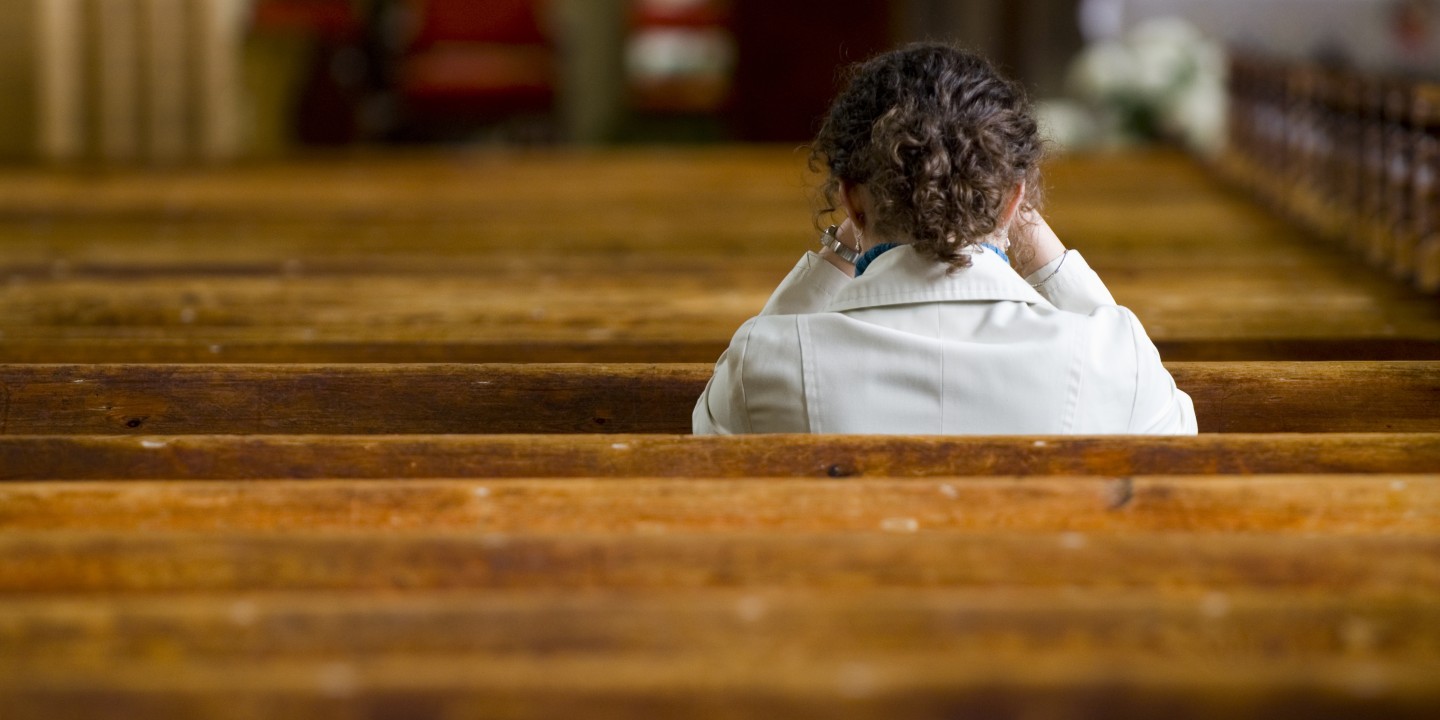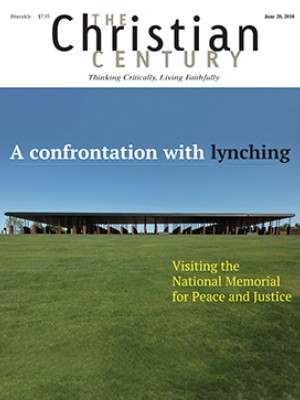Church is the perfect place to cry
We embrace uninitiated visitors, rowdy children, and blue jeans. Why not tears?

When I was a parish priest, it was not unusual for someone to tell me that they couldn’t come to church because if they did, they would cry. I would say, “But that’s OK!” What else is church for, if you can’t sit there and cry?
Some believed me and would let themselves sit, tears streaming down their faces, for part or all of the service. Others couldn’t do it. I’m not sure if they were uncomfortable about others seeing that they were weeping or worried they were being a bother to others with their tears. Perhaps some simply did not want to be made to cry at all.
When it was my job to stand at the front, I almost never cried in church, not even at funerals. I took a step back from parish ministry recently, and last December, my dad was in the hospital during the second holiday season since my mother died. So, on Christmas Eve morning and Christmas Day, I took my own advice: I sat in church and I cried.
Read our latest issue or browse back issues.
I decided to exchange the peace, even though I had tears in my eyes. I mean, I didn’t glad-hand everyone up and down the aisle, but I didn’t want to sit in my pew and ignore everyone or pretend I wasn’t there. I wanted to feel welcome, tears and all, and so I put myself out there. I shook hands with a few people, some of whom stared a little, perhaps wondering if they should say something, but the great thing about the peace is that you say, “Peace be with you,” and there’s no more conversation needed.
I felt part of the fellowship—tears and all. I remembered that “Jesus wept,” and that he was a “man of sorrows and acquainted with grief.” And I felt part of the body of Christ assembled, even with my red, weepy face.
The thing is, I know I wasn’t the only person in church with something to cry about in those days. Maybe this is another reason people don’t like to cry in church: they worry it makes them seem set apart, as if there is something special about their sadness, as if it makes them seem needy or attention-seeking. Of course, most of us have something to cry about, no matter what time of year it is. So I find myself wishing that people cried in church more often. Why not? We welcome people to wear jeans, to bring their children, to receive communion, to fill out a visitor’s card—why not also welcome people to cry? Most of us could stand to be reminded that we are not alone in carrying grief, worry, and struggle. If we can’t cry in church, what’s the point?
Really, churches are a perfect place to cry—safer than while driving your car, less lonely than at home or the movies, and with a whole bunch of faith, hope, and love in the words and music all around you. Tissues aren’t hard to find, and it’s no big deal to slip out to a bathroom when necessary. If you want someone to talk to after the service, you can approach a pastor or a person next to you; if you don’t, you can slip out after the final blessing and no one minds.
Sure, most of us will feel self-conscious drawing attention to ourselves in a public place, even church, and there will be the odd church member who looks askance. And yet, especially these days, as numbers dwindle, most congregations want to make room for the stranger as well as for one another. Church folks know that life isn’t easy. Chances are, most folks in any church have shed a tear in their pew at one point or another, and more and more, it’s accepted that adults and children will make noises, stand at the wrong time, drop things, laugh, or cry during a service. No matter what, a church is God’s house—and regardless of who’s feeling nervous that you’re weeping through the psalm, you have a right to be there, tears and all.
Now, if you’re sobbing so audibly that you’re competing with the organ, you might want to step out; however, blowing your nose and getting red in the face, I have found, blends in quite seamlessly with hymns, scripture, prayers of the people, and worship in general. I admit, it does help if you attend a church where all the pews face the front!
Crying in church isn’t for everyone, and I certainly don’t believe crying should become some kind of spiritual litmus test. But I would love to see churches welcome tears as a normal response to worship. Sometimes folks cry, and not necessarily because they’re sad. Maybe they are moved by joy, or mercy, or the power of the holy. Would it be too much to recognize this in our announcements or welcome notes in the bulletin? For instance, “You are welcome to make yourself at home in our worship—to join in singing and prayer, to sit quietly, to cry, or to laugh.” Or, “You are welcome here, whatever grief, joy, or doubts you may bring today.”
At Christmas we call Jesus Emmanuel, or “God with us.” To sit in my pew, tears and all, was a chance to bring my whole self and whole life into church with me and to feel part of the “us” of “God with us,” instead of just crying alone at my house. I wonder if this could be a blessing for others, too, at the holidays, or on any Sunday of the year, to sit and cry in church when we need to, to be God’s people all together, with all the joys and sorrows, smiles and tears, of human life, before the one who loves us so much.
A version of this article appears in the print edition under the title “Crying in worship.”






